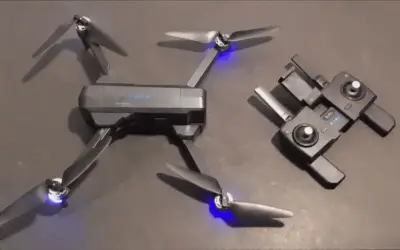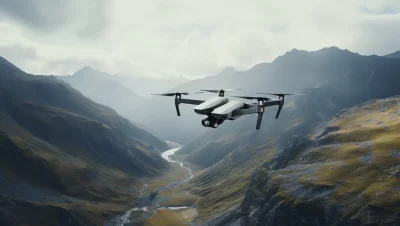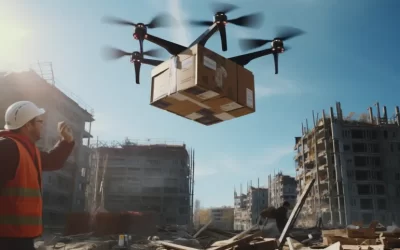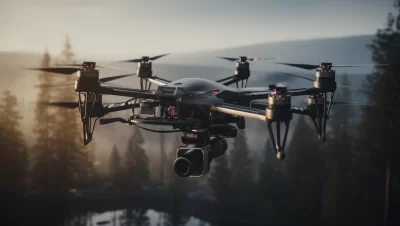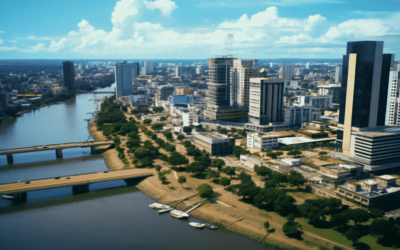Hey there, fellow drone enthusiasts! Are you, like me, curious about Australia’s drone laws? I get it—navigating the world of drones can be quite the challenge, especially with all the do’s and don’ts.
Perhaps you’re a drone hobbyist or a budding commercial operator, and you’re searching for clarity on Australia’s drone regulations. Well, you’re in the right place because I’ve been there, too, and I’ve done the research to help you out.
You see, I was once in your shoes, itching to take my drone to the Australian skies, but first, I needed to understand the rules and regulations inside out. I dove deep into the vast sea of information, went through official documents, and sought answers to those burning questions.
And now, I’m here to share my findings with you. I’ve done the legwork to provide you with insights on Australia’s drone laws, so you don’t have to spend hours scouring the internet for answers.
So, if you’re seeking a comprehensive guide to Australia’s drone laws, you’re in the right place. In this article, I’ll break down the intricacies of drone regulations in Australia and help you navigate the skies with confidence.
From registration and flying responsibilities to understanding no-fly zones and obtaining the necessary licenses, we’ve got it all covered. Stay with me, and by the time you finish reading, you’ll have a clear path to enjoy your drone-flying adventures within the bounds of the law. Let’s get started!
- Drone Classification and Registration
- Australia Drone Laws: Flyer’s Responsibilities
- Australia No-Fly Zones and Restricted Areas
- Commercial Drone Operation in Australia
- Australia Safety Guidelines for Drone Pilots
- Penalties for Violating Drone Regulations
- Evolution of Drone Laws
- Final Thoughts on Australia Drone Laws
- Frequently Asked Questions on Drone Laws in Australia
Drone Classification and Registration

Now, let’s dive into the world of drone classification and registration, a crucial part of understanding Australia’s drone laws.
This is where the adventure begins, as you get to know how drones are categorized, what the weight-based rules are, how to get your drone registered, and why having that registration number is so important.
Overview of Different Drone Classes
In Australia, drones come in all shapes and sizes, and they’re classified into distinct categories. Think of it like a car classification, where we have compact cars, SUVs, and trucks.
Similarly, drones are divided into “Very Small,” “Small,” “Medium,” and “Large” classes. The key here is to know where your drone falls in this classification system, as it determines the specific rules and requirements that apply to your drone. It’s like understanding the rules of the road for different types of vehicles.
Weight-Based Categorization
The weight of your drone plays a significant role in these classifications. It’s kind of like how the size and weight of a vehicle can impact the rules you need to follow on the road.
In the drone world, it’s relatively simple: drones weighing less than 100 grams are considered “Very Small,” while those between 100 and 2,000 grams fall into the “Small” category.
Medium-sized drones range from 2 to 25 kilograms, and the hefty ones, weighing 25 kilograms or more, are classified as “Large.” Knowing your drone’s weight and the corresponding category is the first step in understanding the regulations that apply to you.
Registration Requirements
Getting your drone registered is a must in Australia if it weighs over 250 grams, and even if it’s below that, it’s still a great practice. Think of drone registration as getting a driver’s license for your car. It’s all about accountability and safety.
Registering your drone means you’ll be issued a unique identification number, which you’ll need to attach to your drone. This identification number helps authorities and others easily identify your drone, making the skies safer for all.
Obtaining a Drone Registration Number
So, how do you get that registration number? It’s easier than you might think. The Civil Aviation Safety Authority (CASA) is the go-to place for all things drone registration.
They’ve got an online portal where you can fill in the necessary details about your drone and pay a small fee. Once your information is verified, they’ll send you your registration number. It’s like getting a license plate for your car; it’s your drone’s unique identity in the skies.
Understanding the classifications and the registration process is a crucial first step for any drone operator in Australia. It ensures that you’re operating within the boundaries of the law, promoting safety in the skies, and fostering responsible drone usage. Now that we’ve got the basics down, let’s delve deeper into the exciting world of Australia’s drone laws.
Also Read: Armenia Drone Laws 2024
Australia Drone Laws: Flyer’s Responsibilities

Now, let’s talk about your responsibilities as a drone operator in Australia. These rules are like the roadmap to safe and responsible drone flying, ensuring that the skies are shared harmoniously and safely.
Operating Drones in Daylight
Flying a drone in the dark might sound cool, but in Australia, it’s a no-go. Just like you wouldn’t drive a car without headlights at night, you shouldn’t fly your drone in the dark. It’s all about safety, really.
Drones need to be operated during daylight hours, where you can easily see and control them. It’s a simple rule that keeps everyone safe and minimizes the risks.
Maintaining the Visual Line of Sight
Imagine you’re flying a kite. You’d never let it go so high that it disappeared from sight, right? Well, the same principle applies to drones.
You’re required to maintain a visual line of sight with your drone at all times. Think of it like walking a dog in the park; you need to see where it is and what it’s doing. This rule ensures you can react to any unexpected situations and avoid collisions.
Safe Distances from People and Property
Picture this: your drone whirring away above a stunning beach, capturing some epic footage. Great, right? But remember, you’ve got to keep your drone at a safe distance from people and property. It’s a bit like respecting personal space. Maintain a safe buffer to avoid accidents and to respect the privacy of others.
Altitude Restrictions
Just as there are speed limits on the road, there are altitude limits in the sky. You should never fly your drone higher than 120 meters (about 400 feet) above ground level. It’s a bit like staying in the right lane on the highway.
These altitude restrictions help ensure that drones don’t interfere with manned aircraft, making the skies safer for everyone.
No-Fly Zones and Restricted Areas
Now, this one’s essential. Australia has strict no-fly zones, and these are like the red-light districts on the map. You should never, ever fly your drone near airports, emergency scenes, or other critical infrastructure. These areas are off-limits for safety and security reasons, and there’s no room for negotiation here.
Special Permissions for Flying Near Airports and Critical Infrastructure
If you have a compelling reason to fly your drone near an airport or critical infrastructure, there’s a process to follow.
You’ll need to obtain special permissions from the authorities. Think of it like requesting a VIP pass to an exclusive event. It’s doable, but there are steps to ensure safety and security.
Restrictions on Flying Over Crowds or Gatherings
Just as you wouldn’t toss candy from a parade float without some safety measures, you shouldn’t fly your drone over crowds or gatherings without proper authorization.
These restrictions exist to protect people and prevent accidents. Always remember safety first.
Understanding and following these responsibilities is key to enjoying your drone hobby or operating one commercially while keeping safety and responsibility at the forefront.
These rules are designed to ensure that your drone adventures are enjoyable and incident-free. Now, let’s explore the specifics even further in the world of Australia’s drone laws.
Also Read: Argentina Drone Laws 2024
Australia No-Fly Zones and Restricted Areas

When it comes to Australia’s drone laws, one of the most critical aspects to grasp is the concept of no-fly zones and restricted areas. It’s a bit like knowing where not to drive or park your car.
So, let’s take a closer look at these zones and why understanding them is essential for safe and responsible drone operation.
Detailed Information on Areas Where Drones are Prohibited
It’s important to know the places where you absolutely shouldn’t fly your drone. Think of these areas like the “Do Not Enter” signs on the highway.
These prohibited zones typically include places like airports, military facilities, emergency scenes, and other critical infrastructure.
Flying your drone in these areas could lead to dangerous situations or even legal trouble. Understanding the specifics of these no-fly zones is vital to stay out of trouble and ensure safety.
Using CASA-Provided Maps and Tools to Identify No-Fly Zones
Now, how do you pinpoint these no-fly zones? CASA has got your back. They provide maps and tools to help you identify where it’s a big no-no for your drone to take off.
It’s somewhat akin to using a GPS to find your way, but in this case, you’re navigating the virtual skies. These resources are user-friendly and packed with the latest information to keep you informed and out of restricted areas.
Importance of Restricted Areas
Beyond the no-fly zones, we also have restricted areas. These are a bit like detours on your road trip. While you can still travel through them, you’ll need to follow specific rules and perhaps get some permissions.
These areas could include environmental protection zones, wildlife sanctuaries, or even cultural heritage sites. Understanding these restrictions is crucial not only for your safety but also for preserving the environment and respecting local culture.
Comprehending and respecting no-fly zones and restricted areas is fundamental to being a responsible drone operator in Australia.
Just as you’d follow traffic rules and road signs while driving, following these guidelines ensures that your drone flights are safe, legal, and respectful of the environment and communities.
Now, let’s move on to other aspects of Australia’s drone laws to help you become a more informed and responsible drone pilot.
Also Read: Antigua and Barbuda Drone Laws 2024
Commercial Drone Operation in Australia

Now, let’s switch gears and talk about something many of us dream about – operating drones commercially. It’s like turning your passion for flying drones into a profession, and it’s exciting. But before you dive headfirst into the world of commercial drone operation, there are a few things to consider.
The Role of Remote Pilot Licenses (RePL)
When you’re in the world of commercial drone operation, a Remote Pilot License (RePL) becomes your golden ticket.
It’s similar to having a professional driver’s license for a truck, indicating that you’re qualified to operate medium and large drones for commercial purposes. Having this license sets you apart as a professional drone pilot, and it’s a crucial requirement to turn your passion into a profession.
Qualifications for Obtaining a RePL
Now, here’s where the rubber meets the road. To obtain that coveted RePL, you’ll need to meet certain requirements.
Think of it like the prerequisites for a job. You’ll need to be at least 17 years old, have the necessary knowledge, and be proficient in English to understand and communicate aviation matters. It’s like getting your ducks in a row before embarking on a new career.
Knowledge Tests and Training Criteria
It’s not just about having a license; you need to prove you’ve got the know-how to operate drones safely and effectively.
This is where knowledge tests come into play. You’ll need to demonstrate your understanding of aviation laws, safety procedures, and drone technology. Think of it like studying for a driving test; it’s a way to ensure you’re well-prepared for the road.
Operating Medium and Large Drones for Commercial Purposes
Once you’ve got your RePL and passed the knowledge tests, you’re all set to operate medium and large drones for commercial purposes.
It’s like transitioning from a learner’s permit to a full-fledged driver’s license. Now, you’re authorized to use your skills to capture breathtaking aerial footage, conduct surveys, or any other commercial drone operation within the boundaries of the law.
Venturing into commercial drone operations in Australia is an exciting journey for those passionate about drones. It’s a chance to turn your hobby into a profession.
Remember, while the path might seem daunting, it’s worth every step when you’re capturing the world from a new perspective. So, if you’re considering a career in commercial drone operation, these requirements are your first steps on a rewarding path.
Also Read: Angola Drone Laws 2024
Australia Safety Guidelines for Drone Pilots

Safety is paramount when it comes to drone operations. We’re entering the part of the drone journey where responsibility and precaution take center stage. Think of it like a pit stop during a race—a chance to refuel and ensure everything is in tip-top shape.
CASA’s Safety Recommendations for Drone Operators
CASA has our back when it comes to safety. Just like following the owner’s manual for your car, it’s essential to heed their safety recommendations.
They offer valuable advice on pre-flight checks, understanding airspace, and emergency procedures. These tips can be a lifesaver—quite literally—in ensuring safe drone flights.
Tips on Battery Care and Maintenance
Your drone’s battery is like the heart of the operation. Imagine that it’s akin to maintaining the engine of your car. Proper care and maintenance are essential to extending the life of your battery. Avoid overcharging, keep it cool, and ensure it’s in optimal condition for safe and successful flights.
Respecting Privacy Laws and Capturing Images Responsibly
Flying a drone doesn’t give you a free pass to be a peeping Tom. Privacy laws are important, and they apply to drone operators as well.
Just like you wouldn’t point a camera into someone’s bedroom window, you need to be respectful when capturing images or videos. Always ask for permission and avoid invading people’s personal space.
What to Do in Case of an Emergency or Accident
Accidents can happen, even to the most experienced drone operators. It’s a bit like knowing what to do in case of a car breakdown. If your drone experiences a malfunction or crashes, it’s important to follow specific procedures. Report the incident to CASA, cooperate with authorities, and ensure you don’t leave the scene if there’s property damage or injury involved.
Safety guidelines are the guardrails on the road of drone operation. They protect you, others, and the integrity of the hobby or profession.
So, as we explore these safety aspects, remember that being a responsible and cautious drone operator is not only a legal requirement but also a way to ensure everyone enjoys the skies safely and responsibly.
Also Read: Andorra Drone Laws 2024
Penalties for Violating Drone Regulations

No one likes to talk about consequences, but they’re a part of life, and that includes the world of drone operation. It’s a bit like knowing the potential fines for speeding or running a red light. Understanding the penalties for breaking drone regulations is essential to ensuring you stay on the right side of the law.
Potential Consequences for Non-Compliance
So, what happens if you don’t follow the rules? The consequences can range from mild to severe. Just like breaking a small traffic rule might result in a minor fine, infringing on drone regulations can lead to various penalties. It’s not just about fines; it could mean facing legal action and, in extreme cases, even imprisonment.
Fines, Legal Action, and Imprisonment
Let’s delve into the specifics. Fines can vary, depending on the severity of the violation. It’s a bit like how a parking ticket costs less than a speeding ticket.
More serious infringements can lead to legal action, which can be a significant hassle. In rare cases, where safety or security is compromised, imprisonment could be on the table. Just like serious traffic violations can lead to a suspended license or jail time, drone violations have their own set of repercussions.
Importance of Adhering to Regulations
Now, you might be wondering, “Why all this talk about penalties?” It’s simple: adherence to regulations is not just a legal requirement; it’s a matter of safety and responsibility.
Just as obeying traffic laws ensures safer roads, following drone regulations keeps the skies safe for all users. It’s a collective effort to create an environment where everyone can enjoy the drone hobby or operate drones professionally without unnecessary risks.
Remember, discussing penalties is not meant to scare you but to emphasize the importance of responsible drone operation. It’s all about ensuring a safe and enjoyable experience for you and fellow drone enthusiasts. So, let’s fly with responsibility, and you’ll have clear skies ahead.
Also Read: Algeria Drone Laws 2024
Evolution of Drone Laws

It’s fascinating to witness how the world of drone laws has evolved over time. Just like technology keeps advancing, so do the rules that govern it. This evolution is a bit like how traffic regulations adapt to changes in vehicles and road conditions. Let’s explore this transformation and what it means for us drone enthusiasts.
Drone Regulations Have Evolved Over Time
When drones first took flight, regulations were relatively basic. It was a bit like the early days of automobiles, when traffic laws were sparse.
But as drones gained popularity and technology advanced, it became clear that more comprehensive rules were needed.
Governments worldwide, including Australia, have started crafting regulations to ensure safe and responsible drone use. The journey from a few general guidelines to the detailed rules we have today mirrors how traffic laws developed over time to address new challenges.
Need for Adaptability in the Drone Industry
In the fast-paced world of drones, adaptability is key. Just as cars have evolved with new features and capabilities, drones have transformed too.
The need for adaptable regulations is similar to how traffic laws must account for electric cars, self-driving vehicles, and changing road infrastructure.
Drones now come in various shapes and sizes with different capabilities. This evolution requires regulations that can accommodate new technology and usage scenarios.
The one constant in both drone and traffic regulations is change. To stay on the right side of the law, it’s crucial to stay up-to-date.
Just as you’d check for the latest traffic updates before a road trip, keeping tabs on changing drone regulations is essential. Regulations are dynamic and are adjusted to address emerging challenges and technologies, so being informed is crucial for responsible drone operation.
As drone enthusiasts, it’s exciting to see how drone laws have evolved to create a safe and enjoyable environment for operators.
Just like driving, it’s a journey that requires adapting to changes and staying informed about the rules. As technology continues to advance, so will the regulations, and it’s our responsibility to keep up with these changes for a harmonious coexistence of drones in our skies.
Also Read: Albania Drone Laws 2024
Final Thoughts on Australia Drone Laws

As we wrap up our journey through Australia’s drone laws, let’s take a moment to recap, reflect, and look ahead. Just like the end of a great road trip, this conclusion is a chance to summarize our adventure and leave you with some essential takeaways.
Throughout this article, we’ve explored the intricate web of Australia’s drone regulations. From understanding different drone classes and registration to your responsibilities as a drone operator, we’ve covered a lot of ground.
We’ve delved into no-fly zones, the requirements for commercial drone operation, safety guidelines, and the consequences of not adhering to the rules. It’s been a comprehensive journey, akin to learning the rules of the road before embarking on a cross-country drive.
The recurring theme in our discussion has been responsibility. Just as obeying traffic laws keeps our roads safe, adhering to drone regulations ensures that our skies remain secure.
Whether you’re a hobbyist or a professional drone operator, responsible drone operation is essential. It’s not just about following the rules; it’s about respecting the environment, privacy, and the safety of others.
Like a courteous driver on the road, a responsible drone pilot contributes to the overall well-being of the community.
Our journey doesn’t end here. Much like how a good traveler is always ready for the next adventure, it’s essential to stay informed about the latest drone regulations.
Just as you’d check the road conditions before setting off on a new trip, keeping up with the rules ensures that your drone adventures continue to be smooth and enjoyable.
The world of drones is constantly evolving, and so are the regulations that govern them. By staying informed, you’ll be prepared for any changes on the horizon.
So, dear reader, as you embark on your drone adventures in the beautiful landscapes of Australia, remember that knowledge is your compass, responsibility your co-pilot, and adherence to regulations your fuel. May your flights be safe, your shots be stunning, and your drone journeys be a testament to responsible and enjoyable operation. Happy flying!
Also Read: Afghanistan Drone Laws 2024
Frequently Asked Questions on Drone Laws in Australia
1. Can I fly my drone at night in Australia?
No, in Australia, you are not allowed to operate a drone at night. Drone flights are restricted to daylight hours for safety reasons, as it’s essential to have clear visibility of your drone to ensure safe and responsible operation.
2. Do I need to register my drone in Australia?
Yes, if your drone weighs 250 grams or more, you must register it with the Civil Aviation Safety Authority (CASA). Registration is essential to ensure accountability and safety in the airspace. CASA provides a user-friendly online portal for this purpose.
3. What are the altitude restrictions for drone flights in Australia?
Drone operators in Australia should never fly their drones above 120 meters (approximately 400 feet) above ground level. Staying within this altitude limit is crucial to prevent interference with manned aircraft and maintain safety in the skies.
4. Are there no-fly zones in Australia for drones?
Yes, there are strict no-fly zones in Australia, including areas around airports, military facilities, emergency scenes, and critical infrastructure. Flying your drone in these areas is prohibited for safety and security reasons.
5. What are the penalties for violating drone regulations in Australia?
Penalties for violating drone regulations in Australia can vary based on the severity of the violation. They may include fines, legal actions, and, in extreme cases, imprisonment. It’s essential to adhere to the regulations to ensure safe and responsible drone operation and avoid these penalties.


